When it comes to tiling and learning how to tile and before you begin fixing tiles, you must decide which tile trowel you’ll use. And here comes the tricky part: What notch size should I use? Should I use a U-notched or a squared-notched trowel? Those are common questions you must ask yourself before starting your tiling project.
However, there is not a standard trowel size for tile placement, as it depends on the size and type of tile you place. Each type of tile may require a differently sized trowel. Be concerned with the amount of coverage for the tile.

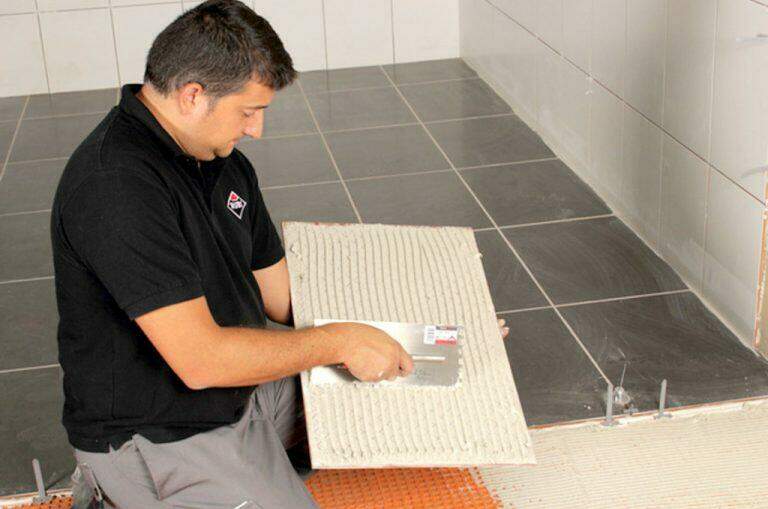
Proper adhesive coverage means a minimum of 85% total coverage beneath a tile for a dry area placement (most floors, fireplace, etc.) and 95% minimum total coverage in a wet area (showers, bath surrounds, etc.).
There is more to that requirement such as complete coverage beneath all four corners of the tile, but those are the basics.
To get proper coverage you need to choose the right sized trowel, one that will give you that amount of coverage beneath the tile. Check this by placing the tile as you normally would, then pulling the tile up and checking the back. There should no longer be any trowel lines and you will see complete coverage of adhesive on both the back of the tile and the substrate.
How Trowel sizes are measured
The size and spacing of the trowel teeth are the basis to measure tile trowel size. This tells you how much adhesive the trowel will leave on the substrate when you spread it out. The trowel’s tooth shape and spacing determines how much adhesive is sandwiched between the tile and substrate once the tile is fully installed.
RUBI manufactures tile trowels in two basic types, the square-notched and the U-notched. They are measured in the same manner, the first number is the width of the notches (the distance between the teeth), the second number is the depth of the notch.
Using a 12mm x 12mm square-notched trowel will leave 12mm ridges of adhesive on the substrate with 12mm spaces between each ridge. A tile trowel with only one measurement (i.e. as 12mm trowel) means that both measurements are the same.
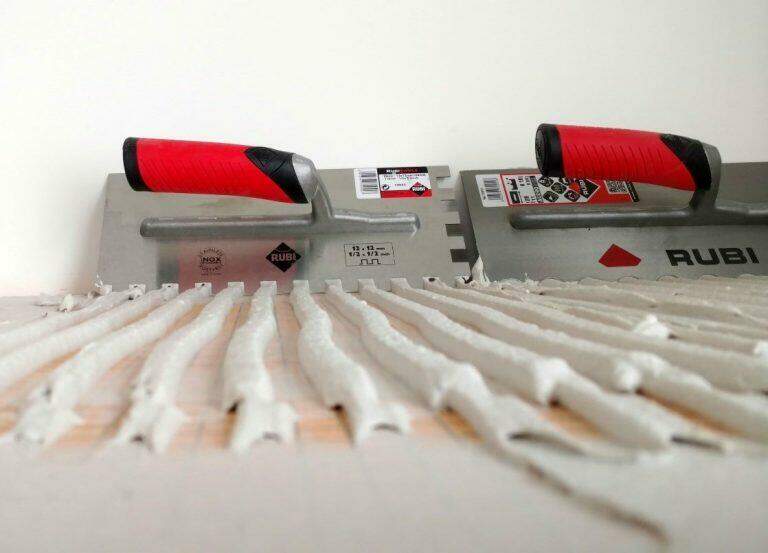
When you use a 6mm x 10mm square-notched trowel you will leave 6mm wide by 10mm high ridges of adhesive on the substrate, with 6mm spaces between each ridge.
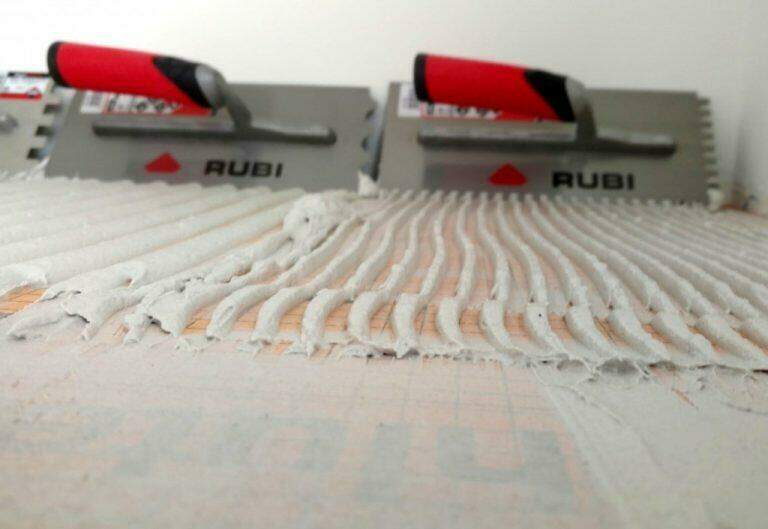
U-notched trowels normally only have one number. This is both the width and depth of the teeth. I am using a 10mm U-notched trowel, which has a half-moon shaped notch. When you spread adhesive with a U-notched trowel, it will leave half-round ridges on the substrate.
The height of the ridges and the space between each ridge will be the size of the trowel (in this case 10mm). The width of each ridge will DOUBLE the trowel size – 20mm.
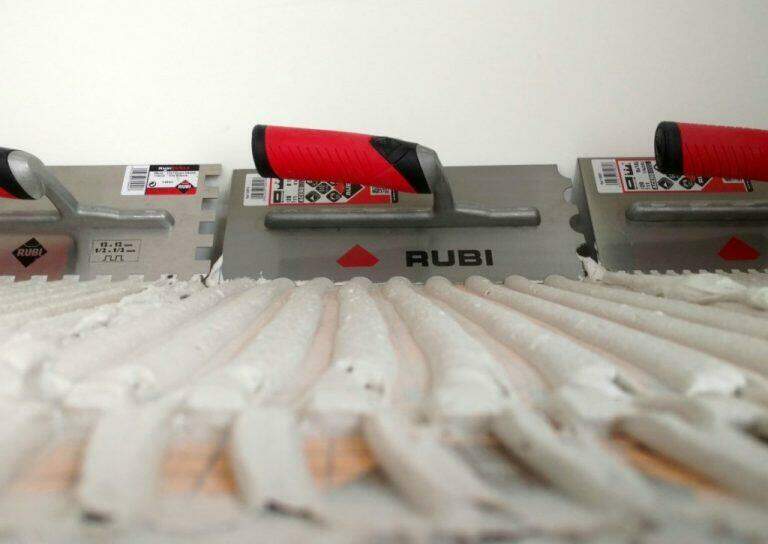
How much adhesive will a trowel leave under the tile
The trowel size determines how much adhesive to put on the substrate, as well as how thick the bed of adhesive should be under the tile.
When you use a square-notched trowel with the same size notch and teeth (i.e. a 12mm x 12mm), the bed of adhesive will be half of that measurement, or 6mm, beneath a flat tile over a flat substrate.
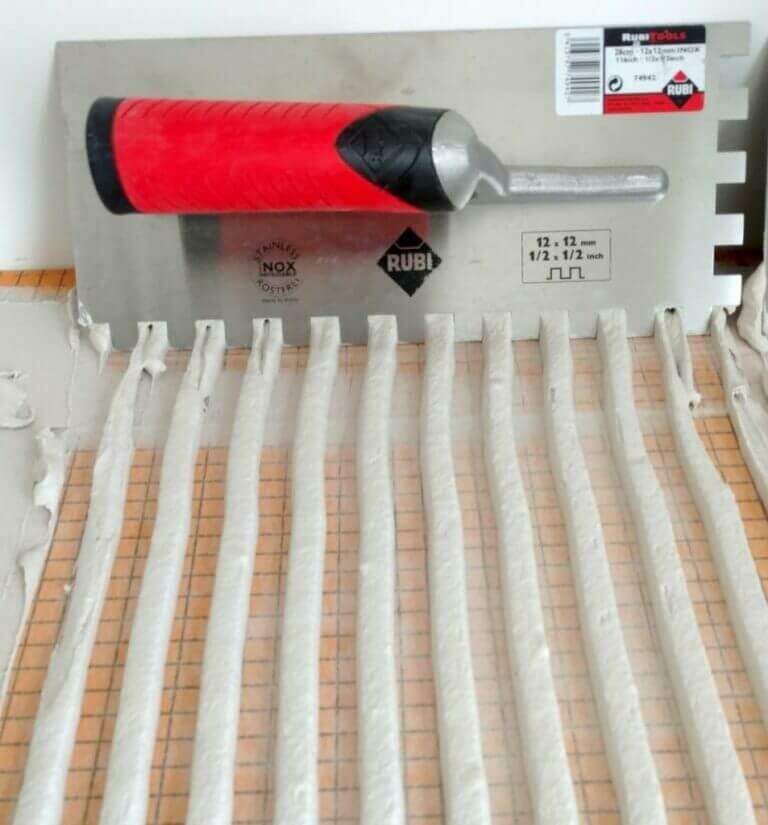
When you fully embed the tile into the bed of adhesive, it spreads out the adhesive ridges evenly into the spaces between the trowel lines. Since the spaces between the ridges have the same size as the ridges themselves, this will split the height of the ridges in half. So a 12mm x 12mm trowel will leave a 6mm high bed of adhesive beneath the tile. A 6mm x 6mm trowel will leave a 3mm bed of adhesive beneath the tile.
Using a U-notched trowel and embedding the tile into the adhesive leaves you with a bed of adhesive beneath the tile a little over 1/3 the size of the trowel teeth. So a 10mm U-notched trowel leaves a 3mm bed of adhesive beneath the installed tile.
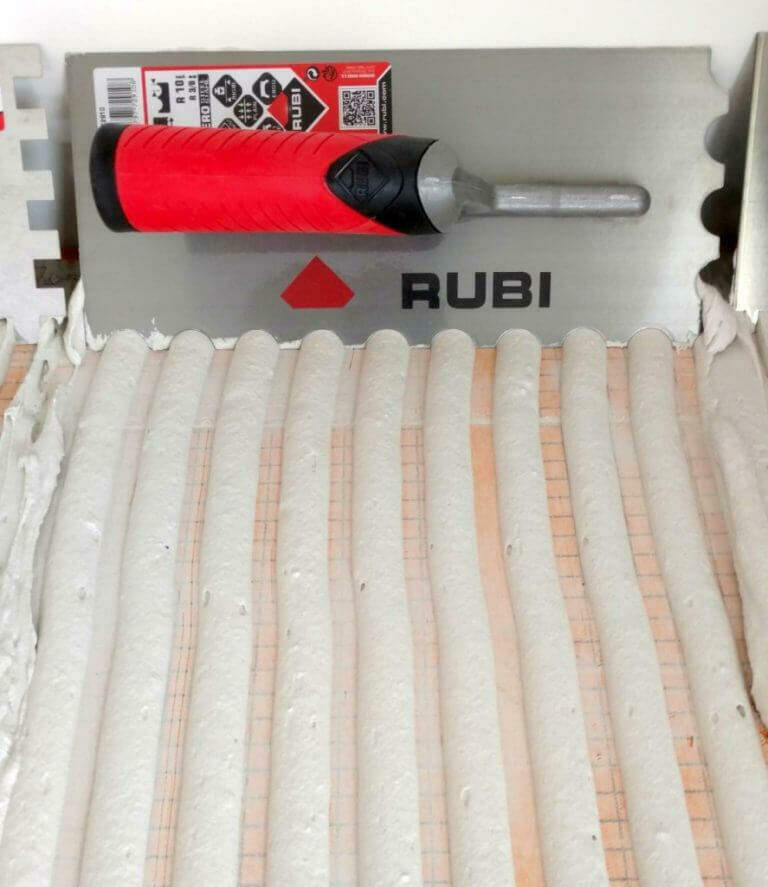
U-notched or square-notched trowel? Which shape of tile trowel to use
Since a 10mm U-notched trowel and a 6mm square-notched trowel will both leave a 3mm layer of adhesive mortar beneath an installed tile, why choose one over the other?
The difference in trowel notch shapes determines how easily the tile becomes fully embedded in the bed of adhesive. In basic terms it is easier to wiggle a tile into a bed of adhesive put down with a u-notched than with a square-notched. You collapse rounded ridges rather than square ridges.
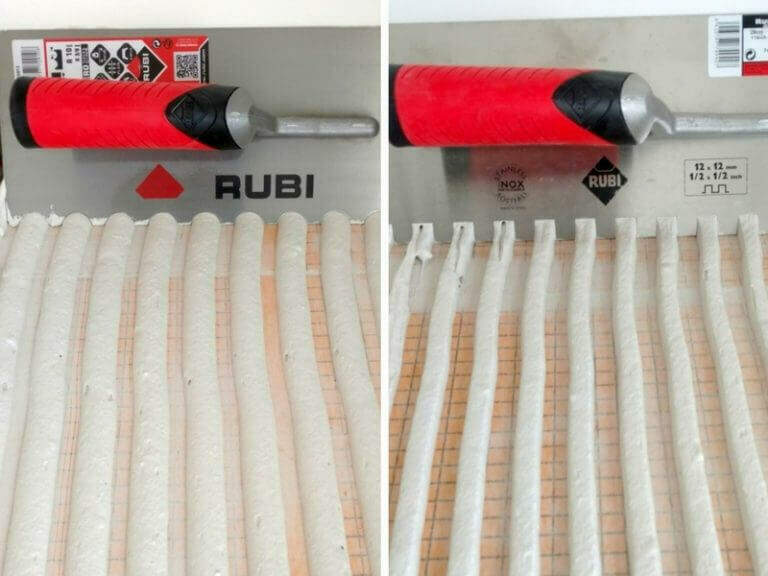
The square ridges, put down with a square-notched trowel, tend to collapse over on each side when you embed the tile into the bed. Pushing the tile down into the bed of square ridges causes the ridges to fold over from the top of the ridge, then spread out.
A U-shaped ridge, on the other hand, spreads OUT when embedding a tile into the bed. Pushing a tile into the bed of rounded ridges causes the ridge of adhesive to spread out, from the bottom, with less possibility of trapping air.
Which trowel size to use?
Determining which trowel size is correct for your tile placement depends on both the tile itself and the substrate. More accurately, it depends on how flat the tile and substrate are. The less flat the tile is, the more adhesive you need beneath it, which means a larger trowel size.
First you must know how much adhesive you want beneath the tile in the finished placement. A finished placement requires a minimum of 2mm beneath the finished placement, aiming for a 3mm minimum makes it easier to calculate the proper tile trowel size.
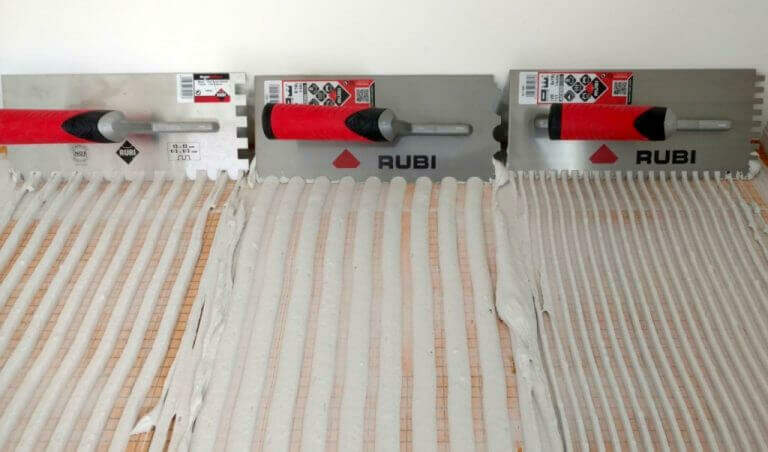
There are two basic ways to determine which size of trowel to use: calculating the warpage (cupping) of the tile and substrate or visual inspection.
Calculating the warpage (cupping)
Cupping of the tile means the amount of variation from the plane. What would be the same to say how ‘out of flat’ your tile is. Figure this out by placing the tile face-to-face and squeezing one corner. If the tile is cupped, the opposite corner will not be face-to-face, it will spread apart. Measure the amount of space between the faces of the tile on the opposite corner then divide that number in half. That is the amount of cupping in the tile.
If squeezing the tile in this manner produces a 6mm space between the tiles in the opposite corner, it means the tile is cupped by 3mm. You must add this amount to the minimum adhesive amount you want beneath the tile to get proper adhesive!
If you want minimum 3mm bed of adhesive beneath the tile cupped by 3mm, you must use a trowel that will leave a 6mm bed of adhesive beneath the finished placement. A 12mm square-notched trowel will accomplish the proper coverage in that instance.

Visual inspection
Visual inspection is simply fully embedding the tile into the bed of adhesive, then removing it and looking at both the substrate and the back of the tile to determine whether you have proper coverage.
This tile was pushed down only about halfway into the bed of adhesive. Notice the 12mm square notched bed on the left side has the most coverage with the 8mm square notch in a close second. The u-notch in the center has even coverage, but you need a much larger notch to get the same amount of coverage.
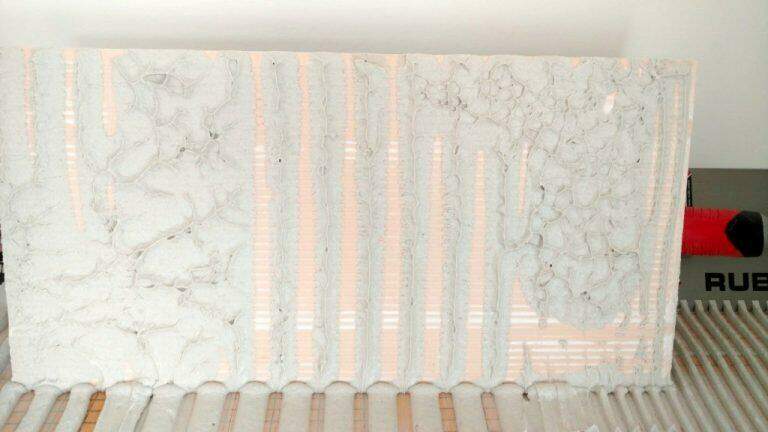
When you calculate the amount of cupping in the tile to determine the properly sized trowel, you still need to visually inspect the coverage to ensure you use the proper size of trowel!
Personal preferences
Above and beyond using the proper method to get proper coverage for a successful placement, your personal preference will help determine which specific tile trowel you use for different types of placement.
As a rule, the larger the tile the larger the trowel. It is always better to use a larger trowel than you might need for the placement. A little extra adhesive beneath a tile is completely acceptable, not enough adhesive beneath the tile is not acceptable.
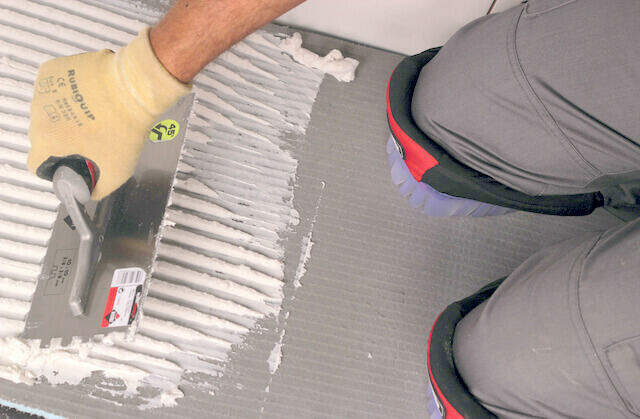
U-notched vs. square-notched is a personal preference. While it is easier to obtain complete coverage with a U-notched, you must also use a larger U-notched trowel to achieve the same bed thickness beneath the placed tile. This is sometimes difficult with vertical placements. It is easier to keep a standing ridge on a wall with smaller square-notched than with a larger U-notched.
U-notched trowels make it easier to keep adhesive out of the grout lines as you embed the tile. There is more space between the half-moon ridges with a U-notched than there is with a square-notched. This makes it easier to have the tile drop into the bed with the edge over an open area between the ridges than over the top of a standing ridge. Since the adhesive spreads out, rather than folding over first, it is less likely that adhesive will fill the grout line as you embed the tile.
Now is your turn! What are your tips to choose the right tile trowel size?
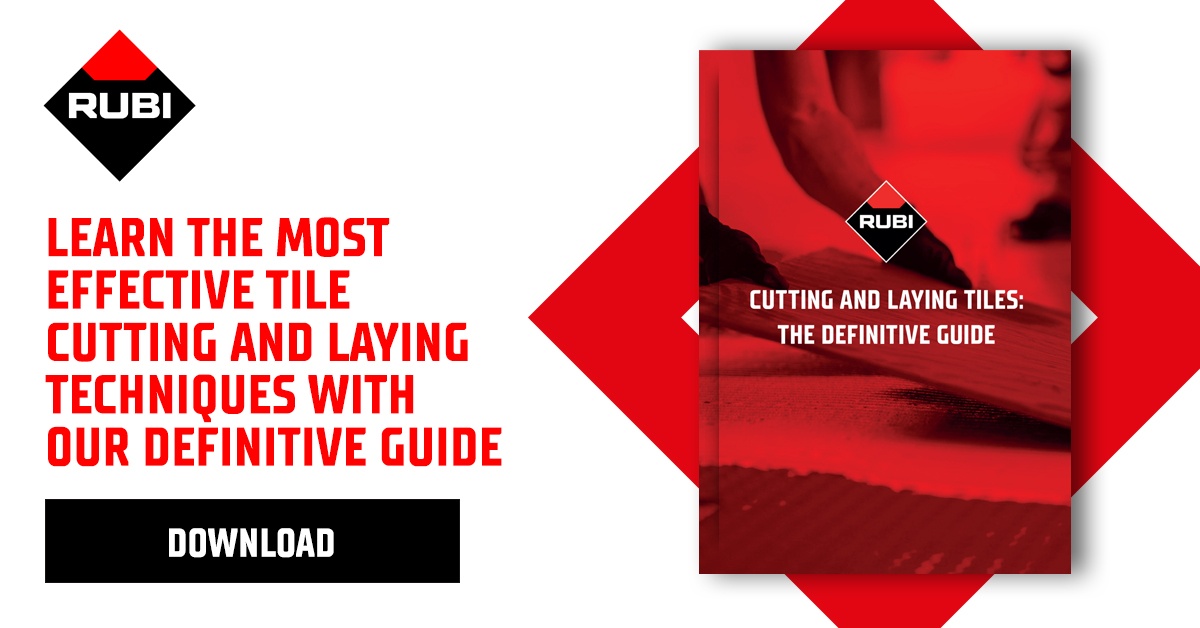

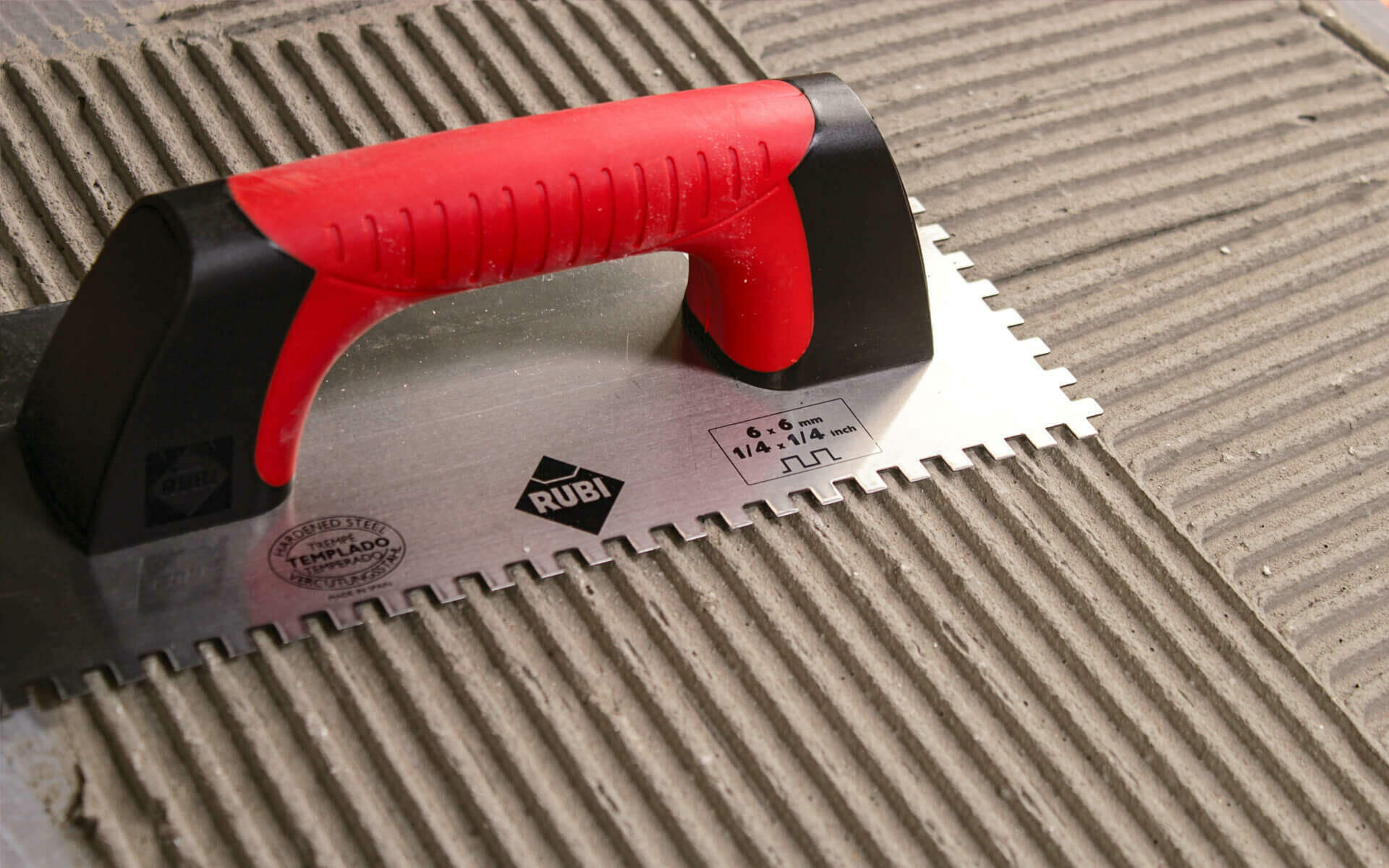
Post a comment